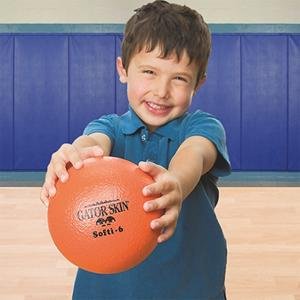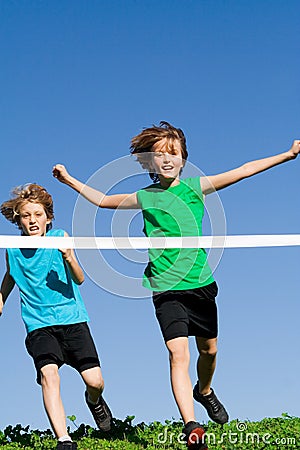Monday, September 26, 2011
Dodgeball: To Play or Not To Play....
I want to first make it clear what side I am on for this argument and I then will support my argument with key points. I am all for dodgeball in the Physical Education program. A proficient Physical Educator shall be able to use different variations and regulations in dodgeball to be able to make it a very physical activity as well as an activity that can be used to assess a student's skills. The first point I will make is that dodgeball can be played in a wide variety of environments, not just a gymnasium.
The ability to be able to play an activity in different environments is at an upmost importance in the school setting. Especially considering the cut-backs that are occurring forcing the physical education program in small or restricting settings. But dodgeball can be played almost everywhere. Any size gymnasium, even a cleared, decent sized classroom, or outdoors. Another key thing is that if you were to take dodgeball outdoors you can play on almost any surface including, but not restricted to, any grass area, tennis courts, concrete, basketball courts, etc. And setting up boundaries are as easy as using cones, book bags, or tape lines.
A lot of the people against dodgeball say that it is a dangerous, violent game and puts children at risk of getting injured. I highly disagree with that. Equipment for dodgeball is in fact very safe, gator balls. They are soft, very cushioned balls that in fact absorb force as soon as impact is made. Of my 3 years as a camp counselor I have never, ever seen a detrimental injury due to getting hit by a gator ball. Even if you were to search online or ask teachers, it is most likely that they have never had a serious or even minor injury from a child getting struck with a gator ball. On the other hand, sports and activities that include bats, baseballs, softballs, golf balls, gymnastics, etc. have seen serious and even fatal injuries. There is a safety risk in every activity that is incorporated in the physical education curriculum but I do not believe dodgeball is a high-risk activity.
Another point I would like to make is that dodgeball is an activity in which a physical educator would be capable of using assessment tools to assess their students. Assessing a student's skills in dodgeball is as simple as assessing a student's skills in basketball or baseball. A physical educated person should be capable of developing a skill assessment for a dodgeball setting, as well as in any activity. You can assess students on throwing, catching, running, agility, jumping, strategizing, and much more. You can assess a large variety of fine motor skills in a efficient amount of time. Dodgeball also makes it possible for a physical educator to interact with the students during the activity and assess them first hand.
The last point I would like to make is that with the proper variations, dodgeball can be a very active activity in which way more than 50% of the overall student population is participating for over a third of the duration of the activity. Variations such as Medic, Star Wars, Corner Ball, Octopus, Spider, Etc. make it possible for children to constantly be active during the duration of the game. Rules also make the game more active, safer, and more skills demanding. For example, a rule I have used before is that once you receive the ball you only get four steps and then you must throw the ball. Another that can be used to keep the game active is that if you get out, you must run to the designated spot, do an activity such as jumping jacks and then return into the game. Another is that if you catch an opponents ball, one of your teammates returns into the game. With so much freedom to make the game of dodgeball your own with rules and variations should encourage a physical education teacher to make this a very enjoyable, useful, and learning game.
In conclusion, I want to state that dodgeball can be used as a progressive learning activity as well as an assessment tool for teachers. Teaching proper, educated dodgeball and variations of dodgeball can not be done by anyone. A physically educated person will be able to take this activity, make it their own and use it as an important teaching activity.
Tuesday, September 20, 2011
Sunday, September 18, 2011
The Importance of Fundamental Skill Development & Assessment
Fundamental skill development is key for young children to have because it sets the building blocks for future use of motor, cognitive and affective skills. With fundamental skill development and assessment being so important for the learning child, us as physical educators must make it a top priority to ensure proper development of children's skills. The specific lessons, behaviors, and experiences that are taught to developing children should always be influenced by the fundamental skills that the children already know and/or need to learn. There are genetic and environmental factors that physical educators need to take into consideration when teaching fundamental skills to children. By doing this we ensure the best possible development of fundamental skills. The present as well as future health of our students depends on a proper physical education program.
All of the NASPE standards play a factor in proper fundamental skill development but I feel there are three specific ones associated to this particular topic:
- I. Demonstrates competency in many movement forms & proficiency in a few movement forms
- II. Applies movement concepts & principles to the learning and development of motor skills
- VI. Demonstrates understanding & respect for differences amount people in physical activity settings
- [ www.aahperd.org/naspe ]
By abiding by these standards, it is possible for a physical educator to teach the proper lessons to children in order for them to develop fundamental skills no matter the individual skill level of each child.
In conclusion, fundamental skill development and assessment are so important to our profession and the health of our students because it is imperative for young children to properly learn and perform these motor, cognitive and affective skills. If we can help students successfully develop these basic movement skills they are more likely to live a healthier and more active lifestyle.
Subscribe to:
Posts (Atom)






